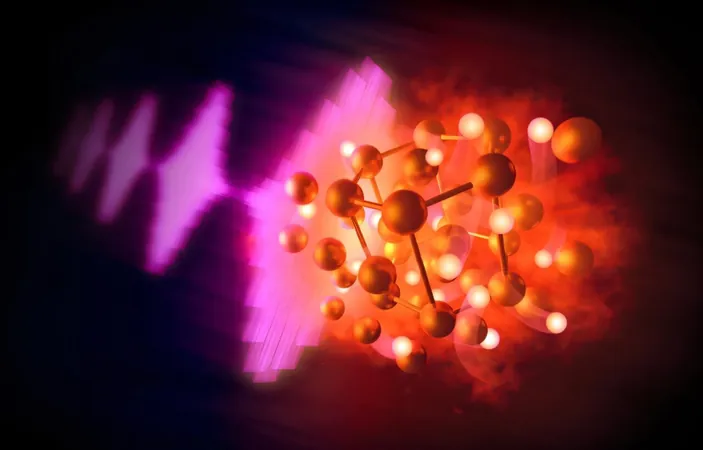
Breakthrough Discovery: Scientists Form Solid Gold Hydride from Gold and Hydrogen!
2025-08-05
Author: Wei Ling
In an exciting twist of fate, an international research team led by scientists at the SLAC National Accelerator Laboratory has successfully created solid gold hydride for the very first time, showcasing how two seemingly unreactive elements—gold and hydrogen—can combine under extreme conditions.
Initially, the researchers were investigating hydrocarbons and their transformation into diamonds when exposed to intense pressure and heat. Conducting experiments at the European XFEL in Germany, they embedded gold foil in hydrocarbon samples, expecting the gold to simply absorb X-rays. However, much to their astonishment, the scientists not only witnessed diamond formation but also stumbled upon gold hydride.
According to Mungo Frost, the lead scientist, this outcome was unexpected because gold is usually considered chemically unexciting. "These findings indicate that extreme environments can lead to a whole new realm of chemistry, enabling the creation of exotic compounds that defy traditional understanding," he stated.
The research, detailed in the journal Angewandte Chemie International Edition, opens a window into how chemical behaviors dramatically shift under extreme situations, such as those seen on other planets or in hydrogen-fusing stars.
To create these astonishing results, the team compressed hydrocarbon samples to pressures greater than those found within Earth’s mantle. They then bombarded the samples with X-ray pulses, heating them to fiery temperatures exceeding 3,500 degrees Fahrenheit. The scattering patterns of X-rays revealed structural changes, indicating that carbon atoms had transformed into diamonds, but also highlighted unexpected signals pointing to the interaction of hydrogen and gold.
In this extreme environment, hydrogen transcended to a dense, "superionic" state, flowing freely through gold’s rigid atomic structure—dramatically increasing the conductivity of gold hydride.
Hydrogen, being the lightest element, is typically challenging to study using X-rays because of its weak scattering properties. However, in this superionic state, its interactions with heavy gold atoms unveiled insights that would have otherwise been elusive. "The gold lattice acts as a witness to the dynamic behavior of hydrogen," Mungo explained.
This groundbreaking gold hydride could provide significant insights into dense atomic hydrogen, particularly in atmospheres similar to those of distant planets. Furthermore, it poses potential implications for deepening our understanding of nuclear fusion processes occurring within stars, potentially aiding the development of fusion technologies on Earth.
Not only does this research set the stage for exploring dense hydrogen, but it also uncovers new pathways in chemistry. Traditionally deemed unreactive, gold was shown to form a stable hydride only under extreme conditions—suggesting a wealth of possibilities as the compound separates when cooled down.
The research team emphasized the importance of these experimental conditions, noting that transformation simulations could be applied to understand other exotic materials under similar high-pressure scenarios. According to Siegfried Glenzer, the principal investigator, "This framework is crucial for modeling unique material properties that emerge in extreme environments, significantly expanding our knowledge in the field."



 Brasil (PT)
Brasil (PT)
 Canada (EN)
Canada (EN)
 Chile (ES)
Chile (ES)
 Česko (CS)
Česko (CS)
 대한민국 (KO)
대한민국 (KO)
 España (ES)
España (ES)
 France (FR)
France (FR)
 Hong Kong (EN)
Hong Kong (EN)
 Italia (IT)
Italia (IT)
 日本 (JA)
日本 (JA)
 Magyarország (HU)
Magyarország (HU)
 Norge (NO)
Norge (NO)
 Polska (PL)
Polska (PL)
 Schweiz (DE)
Schweiz (DE)
 Singapore (EN)
Singapore (EN)
 Sverige (SV)
Sverige (SV)
 Suomi (FI)
Suomi (FI)
 Türkiye (TR)
Türkiye (TR)
 الإمارات العربية المتحدة (AR)
الإمارات العربية المتحدة (AR)